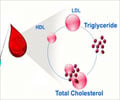In developed nations, weight usually increases with childbirth. Now, scientists have observed that breast-feeding for 6 months can cause reduction in body mass index by almost 1 percent.

According to scientists, repeated child births and breast feeding can affect a woman’s body mass index.
Bobrow and colleagues conducted a cross-sectional, population-based study to assess the relationship between parity and body mass index and their long-term aftermaths. The study was published in International Journal of Obesity 2013.
Around 740 628 postmenopausal females participated in The Million Women Study in Scotland and England during 1996-2001. Their weight, height, reproductive histories, etc were recorded.
The females were aged between 50 to 64 years and their mean BMI was 26.2 kg m−2. Around 88 percent of women were parous with two children. A rise in BMI was observed with repeated childbirths. The BMI increased from 25.6 kg m−2 to 27.2 kg m−2 in nulliparous women.
Around 70% parous women included in the study had ever breastfed and their average total duration of breastfeeding was 7.7 months
On an average, a fall of 1 percent was noted in BMI for every six months of breast-feeding. The experts said that the results were not affected by socioeconomic status, physical activity, region or smoking.
Reference:
Persistent effects of women’s parity and breastfeeding patterns on their body mass index: results from the Million Women Study; Bobrow et al; International Journal of Obesity 2013.
Source-Medindia













